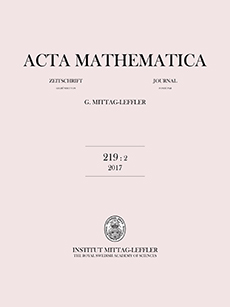We prove that the $L_4$ norm of the vertical perimeter of any measurable subset of the $3$-dimensional Heisenberg group $\mathbb{H}$ is at most a universal constant multiple of the (Heisenberg) perimeter of the subset. We show that this isoperimetric-type inequality is optimal in the sense that there are sets for which it fails to hold with the $L_4$ norm replaced by the $L_q$ norm for any $q \lt 4$. This is in contrast to the $5$-dimensional setting, where the above result holds with the $L_4$ norm replaced by the $L_2$ norm.
The proof of the aforementioned isoperimetric inequality introduces a new structural methodology for understanding the geometry of surfaces in $\mathbb{H}$. In a previous work (2017) we showed how to obtain a hierarchical decomposition of Ahlfors-regular surfaces into pieces that are approximately intrinsic Lipschitz graphs. Here we prove that any such graph admits a foliated corona decomposition, which is a family of nested partitions into pieces that are close to ruled surfaces.
Apart from the intrinsic geometric and analytic significance of these results, which settle questions posed by Cheeger–Kleiner–Naor (2009) and Lafforgue–Naor (2012), they have several noteworthy implications. We deduce that the $L_1$ distortion of a word-ball of radius $n\geqslant 2$ in the discrete $3$-dimensional Heisenberg group is bounded above and below by universal constant multiples of $\sqrt[4]{\operatorname{log}n}$; this is in contrast to higher dimensional Heisenberg groups, where our previous work (2017) showed that the distortion of a word-ball of radius $n \geqslant 2$ is of order $\sqrt{\operatorname{log} n}$. We also show that, for any $p \gt 2$, there is a metric space that embeds into both $\ell_1$ and $\ell_p$, yet not into a Hilbert space. This answers the classical question of whether there is a metric analogue of the Kadec–Pełczyński theorem (1962), which implies that a normed space that embeds into both $L_p$ and $L_q$ for $p \lt 2 \lt q$ is isomorphic to a Hilbert space. Another consequence is that for any $p \gt 2$ there is a Lipschitz function $f : \ell_p \to \ell_1$ that cannot be factored through a subset of a Hilbert space using Lipschitz functions, i.e., there are no Lipschitz functions $g : \ell_p \to \ell_2$ and $h : g (\ell_p) \to \ell_1$ such that $f = h \circ g \,$; this answers the question, first broached by Johnson–Lindenstrauss (1983), whether there is an analogue of Maurey’s theorem (1974) that such a factorization exists if $f$ is linear. Finally, we obtain conceptually new examples that demonstrate the failure of the Johnson–Lindenstrauss dimension reduction lemma (1983) for subsets of $\ell_1$; these are markedly different from the previously available examples (Brinkman–Charikar, 2003) which do not embed into any uniformly convex normed space, while for any $p \gt 2$ we obtain subsets of $\ell_1$ for which the Johnson–Lindenstrauss lemma fails, yet they embed into $\ell_p$.

